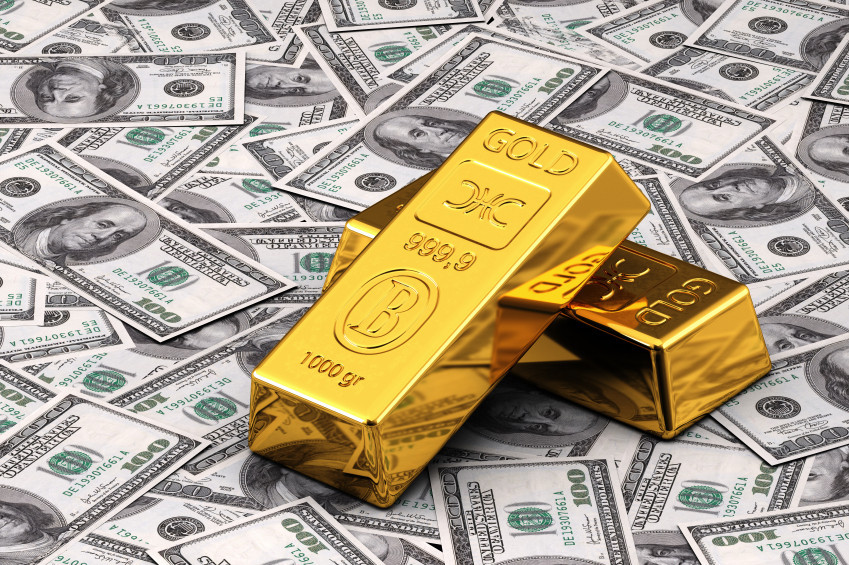
In the rivalry between two reliable defensive assets, namely gold and the US currency, the concept of victory remains vague. Sometimes the yellow metal wins, and the dollar sags for a short time, and vice versa. At the same time, gold remains the leader in terms of purchases and often bypasses USD in the list of safe haven assets.
According to analysts, in the near future, the yellow metal is waiting for new lows, although in the short term, gold holds a fairly strong position. According to current reports, gold periodically falls into a bearish trend. Over the past three weeks, major market players have been reducing their positions on the growth of the precious metal and allowing a breakdown of the support level near $1,700. At the same time, the cost of gold has significantly decreased for three consecutive sessions.The price of the yellow metal slightly exceeded $1,720 per 1 troy ounce on Monday morning, September 5, maintaining the previous week's trend. The potential appreciation of the precious metal is holding back the rising dollar, and the energy crisis in Europe is supporting demand for this safe haven asset. At the beginning of the new week, the XAU/USD pair was trading in the range of $1721.90-$1722, trying to go beyond it.

Currently, major hedge funds have increased their sales of gold (by 5% over the past week) and reduced the volume of its purchases. The strengthening of this trend contributes to the further subsidence of the precious metal, experts warn. Recall that this year, gold has experienced a long decline amid a series of sharp increases in interest rates by the Federal Reserve. This measure strengthened the US currency and US government bond yields, but weakened gold. The yellow metal sank most of all after Fed Chairman Jerome Powell's statements about the continuation of the current cycle of tightening the monetary policy. Markets are currently estimating a 70% chance of a rate hike by the US central bank in September (by 75 bps).
Pressure on the cost of the yellow metal is exerted by expectations of further tightening of monetary policy by the leading central banks. According to experts, any signals about a possible increase in the key rate by 75 bps etc. will put pressure on gold. In addition to the US central bank, its European counterpart is also preparing to raise interest rates in September. The key task of central banks remains the fight against skyrocketing inflation, while the threat of a recession has faded into the background. In these circumstances, it is difficult for the Fed to raise interest rates too aggressively, analysts say. At the same time, the strengthening of the US currency puts downward pressure on the price of the yellow metal.
Currently, gold lacks confidence to move further as the possibility of a fall in its price (to $1,700 per 1 ounce in the fourth quarter of 2022) increases. However, the forecasts of some analysts are encouraging. Currency strategists at Standard Chartered Bank are confident that the precious metal is unlikely to become much cheaper, since part of the risks of a fall is already included in its value. The specialists expect the downward trend of the precious metal to slow down, which is now under pressure due to fears of an aggressive tightening of the Fed's monetary policy.
The yellow metal was tripped up by the growing dollar. Positive data on the US labor market provided additional support to the greenback, whose strengthening position was one of the reasons for the decline in the value of gold. As a result, the price of gold collapsed after the number of vacancies in America exceeded the expected figure. Against this background, many experts have come to the conclusion that in the long run, the dollar will replace the precious metal in the list of traditional defensive assets. At the moment, such a scenario is unlikely, analysts emphasize. Now the yellow metal does not bring a large investment income, but is in active demand in an environment of geopolitical and economic uncertainty. In addition, gold remains a sought-after defensive asset in the face of rapidly rising inflation.
 English
English 
 Русский
Русский Bahasa Indonesia
Bahasa Indonesia Bahasa Malay
Bahasa Malay ไทย
ไทย Español
Español Deutsch
Deutsch Български
Български Français
Français Tiếng Việt
Tiếng Việt 中文
中文 বাংলা
বাংলা हिन्दी
हिन्दी Čeština
Čeština Українська
Українська Română
Română

